PTPN5
-
Official Full Name
protein tyrosine phosphatase, non-receptor type 5 (striatum-enriched) -
Overview
Striatal enriched phosphatase (STEP, also known as PTPN5), is a protein tyrosine phosphatase expressed in dopaminoceptive neurons of the central nervous system. Alternative splicing produces the cytosolic STEP46 and the membrane-associated STEP61 isoforms -
Synonyms
PTPN5;protein tyrosine phosphatase, non-receptor type 5 (striatum-enriched);PTPSTEP;STEP
Recombinant Proteins
- Human
- Mouse
- Rhesus macaque
- Rat
- Mus musculus
- E.coli
- Mammalian Cells
- HEK293
- In Vitro Cell Free System
- Wheat Germ
- GST
- His
- T7
- Non
- Flag
- Avi
- Fc
- SUMO
- DDK
- Myc
Background
What is PTPN5 protein?
PTPN5 gene (protein tyrosine phosphatase non-receptor type 5) is a protein coding gene which situated on the short arm of chromosome 11 at locus 11p15. PTPN5 Protein, Protein Tyrosine Phosphatase Non-Receptor Type 5 (PTPN5), Also known as striatal-enriched protein tyrosine phosphatase (STEP). It is a protein that is highly expressed in brain tissue, especially in neurons such as the basal ganglia, hippocampus, and cortex. PTPN5 plays an important role in regulating intracellular signaling pathways, particularly those related to cellular stress response, cell cycle control, neurodevelopment, and neuroplasticity. The PTPN5 protein is consisted of 565 amino acids and PTPN5 molecular weight is approximately 63.5 kDa.
What is the function of PTPN5 protein?
The functions of PTPN5 include the removal of tyrosine phosphorylation on proteins, which is an important intracellular signaling regulation mechanism. Through dephosphorylation, PTPN5 regulates the activity of various protein kinases and influences cell physiological processes, including cell growth, differentiation, apoptosis, and intracellular signaling. In addition, PTPN5 also has a role in the reproductive system, and its expression in the pituitary gland is related to the secretion of follicle-stimulating hormone (FSH), which is regulated by interacting with the signaling pathway of the GnRH (gonadotrophin releasing hormone) receptor.
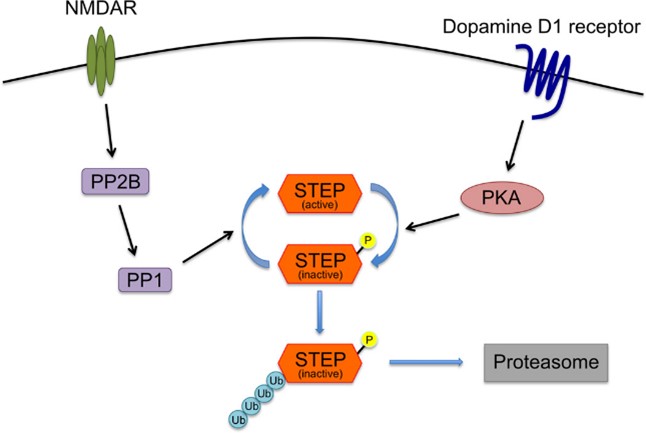
Fig1. Regulation of STEP expression and activity. (Takatoshi Karasawa, 2014)
PTPN5 Related Signaling Pathway
PTPN5 interacts with inhibitory Erk and has an impact on the inhibitory effect of Erk and MAPK signal transduction pathway. PTPN5 is thought to play a role in cellular stress responses, possibly by regulating specific kinase activity in response to intracellular stress signals. The role of PTPN5 in neuroplasticity is related to its regulation of NMDA receptor activity, which affects learning and memory processes. PTPN5 is expressed in the pituitary gland and regulates follicle-stimulating hormone (FSH) secretion by interacting with the signaling pathway of the GnRH (gonadotrophin releasing hormone) receptor. PTPN5 influences neurotransmission and cellular function by regulating intracellular calcium ion concentration.
PTPN5 Related Diseases
The PTPN5 protein is associated with a variety of diseases, including but not limited to: viral gastritis, hemoglobin D disease, Alzheimer's disease, autism, schizophrenia, and certain cancer types such as esophageal cancer, gastric adenocarcinoma, and colorectal cancer. Abnormal expression of PTPN5 may be associated with the development of these diseases, and its expression level in cancer may be related to diagnosis, clinicopathological parameters, and survival. In addition, mutations in the PTPN5 gene have been linked to Fragile X Syndrome. Therefore, PTPN5 is associated with neurodegenerative diseases, psychiatric disorders, digestive disorders, and other pathological processes that may be involved.
Bioapplications of PTPN5
Drug development: PTPN5, as a key regulator in cell signaling, is a potential target for drug development, especially in the fields of cancer therapy and neurological diseases.
Biomarkers: Variations in PTPN5 expression levels in certain diseases make it useful as a biomarker for disease diagnosis and prognostic assessment.
Clinical trials: PTPN5-related drugs and biomarkers are being evaluated in clinical trials for efficacy and safety in the treatment of cancer and other diseases.
Drug screening: PTPN5 can be used as a target for drug screening to help discover and optimize potential therapeutic drugs.
Gene therapy: Gene therapy strategies targeting PTPN5 may help treat genetic disorders caused by its abnormal function.
Case Study
Case Study 1: Hongmei Wang, 2021
Protein tyrosine phosphatase non-receptor type 5 (PTPN5), also called striatal-enriched protein tyrosine phosphatase (STEP), is highly expressed in neurons of the basal ganglia, hippocampus, cortex, and related structures, also in the pituitary. Gonadotropins are the key regulator of the reproduction in mammals. In this study, PTPN5 is detected to express in murine pituitary in a developmental manner. Moreover, the expression of PTPN5 in the pituitary is heavily reduced after ovary removal. Follicle-stimulating hormone (FSH) secretion in gonadotropes is regulated by PTPN5 via binding GnRH to GnRH-R. Two parallel signaling pathways, Gs-protein kinase A (PKA)-PTPN5 and Gq-phospholipases C (PLC)-p38 MAPK-PTPN5, cooperatively regulate GnRH-induced FSH secretion. Researchers also show that influx of Ca2+ activates the Ca2+ -dependent phosphatase calcineurin, leading to the phosphorylation and activation of PTPN5. The intracellular release of Ca2+ is reduced via TC2153.
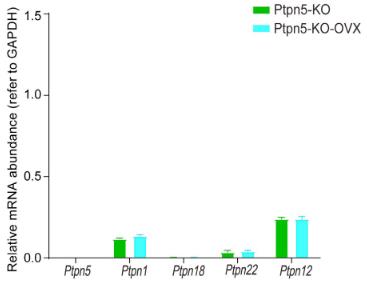
Fig1. Comparison of PTPNs levels between PTPN5 and PTPN5-OVX mice.
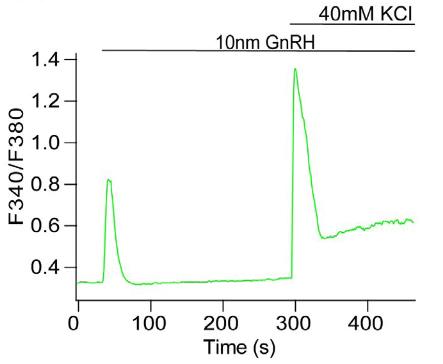
Fig2. SiPTPN5 inhibited Ca2+ oscillations evoked by GnRH in the same cell.
Case Study 2: J P H Chow, 2013
Phosphorylation regulates surface and synaptic expression of NMDA receptors (NMDARs). Both the tyrosine kinase Fyn and the tyrosine phosphatase striatal-enriched protein tyrosine phosphatase (STEP) are known to target the NMDA receptor subunit GluN2B on tyrosine 1472, which is a critical residue that mediates NMDAR endocytosis. STEP reduces the surface expression of NMDARs by promoting dephosphorylation of GluN2B Y1472, whereas the synaptic scaffolding protein postsynaptic density protein 95 (PSD-95) stabilizes the surface expression of NMDARs. However, nothing is known about a potential functional interaction between STEP and PSD-95. Here researchers now report that STEP61 binds to PSD-95 but not to other PSD-95 family members. PSD-95 expression destabilizes STEP61 via ubiquitination and degradation by the proteasome. Using subcellular fractionation, they detect low amounts of STEP61 in the PSD fraction. Importantly, only extrasynaptic NMDAR expression and currents were increased upon STEP knockdown, as is consistent with low STEP61 localization in the PSD.
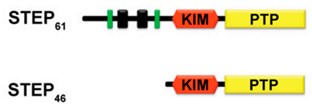
Fig3. Domain structure of STEP61 and STEP46.
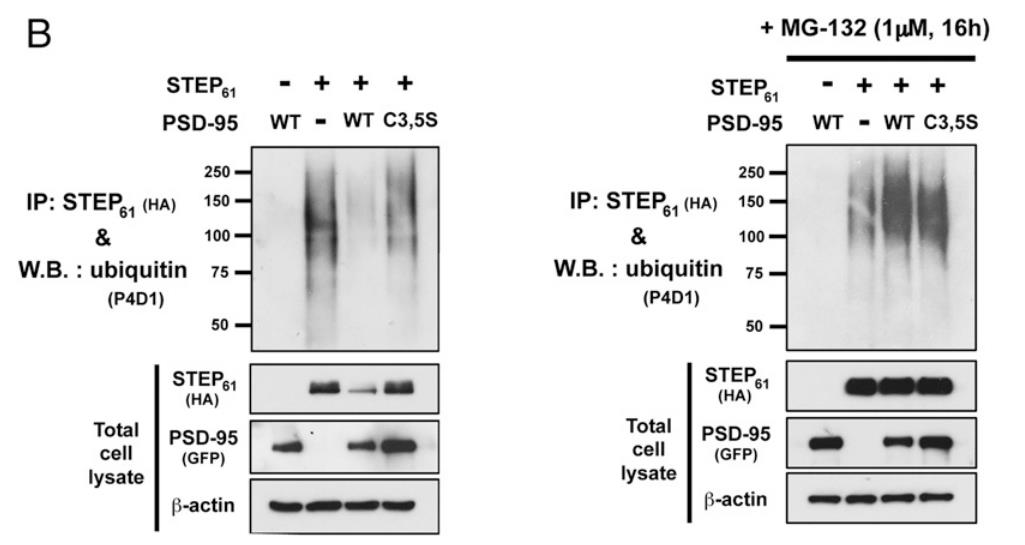
Fig4. Cultured cortical neurons expressing HA-STEP61 and GFP-tagged PSD-95.
Quality Guarantee
High Purity
.jpg)
Fig1. SDS-PAGE (PTPN5-8092H)
.
.jpg)
Fig2. SDS-PAGE (PTPN5-5689H)
Involved Pathway
PTPN5 involved in several pathways and played different roles in them. We selected most pathways PTPN5 participated on our site, such as , which may be useful for your reference. Also, other proteins which involved in the same pathway with PTPN5 were listed below. Creative BioMart supplied nearly all the proteins listed, you can search them on our site.
| Pathway Name | Pathway Related Protein |
|---|
Protein Function
PTPN5 has several biochemical functions, for example, . Some of the functions are cooperated with other proteins, some of the functions could acted by PTPN5 itself. We selected most functions PTPN5 had, and list some proteins which have the same functions with PTPN5. You can find most of the proteins on our site.
| Function | Related Protein |
|---|
Interacting Protein
PTPN5 has direct interactions with proteins and molecules. Those interactions were detected by several methods such as yeast two hybrid, co-IP, pull-down and so on. We selected proteins and molecules interacted with PTPN5 here. Most of them are supplied by our site. Hope this information will be useful for your research of PTPN5.
CXCL9;TMEM51;TMEM51;VTI1B;TERF1;ZBTB5;SNX4;FAM58A;CUL5;APOA1
Resources
Related Services
Related Products
References
- Reinhart, VL; Nguyen, T; et al. DOWNSTREAM EFFECTS OF STRIATAL-ENRICHED PROTEIN TYROSINE PHOSPHATASE REDUCTION ON RNA EXPRESSION IN VIVO AND IN VITRO. NEUROSCIENCE 278:62-69(2014).
- Francis, DM; Page, R; et al. Sequence-specific backbone H-1, C-13 and N-15 assignments of the 34 kDa catalytic domain of PTPN5 (STEP). BIOMOLECULAR NMR ASSIGNMENTS 8:185-188(2014).


